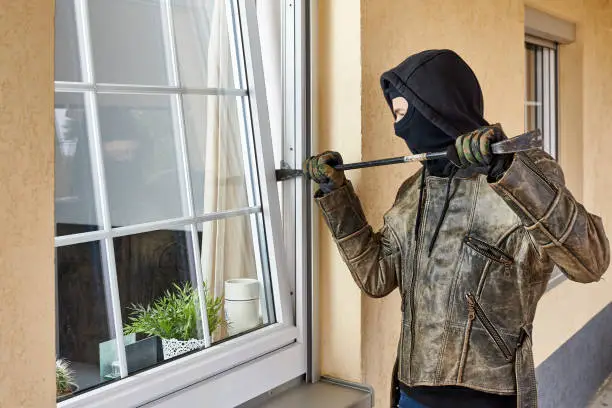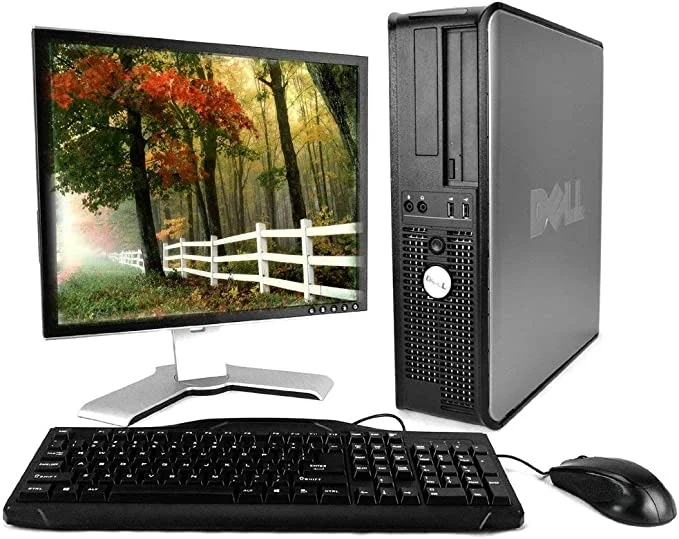
In today’s age Home Security and Business Security has become a top priority. With Home break ins home intrusions and home thefts. So, a Home Security has become a MUST to protect your Family and your house from intrusions
Purchasing a home security system once required a technician to come into your house and run wires through your walls, but today’s systems are wireless—and much easier to install.
Traditional security companies have had to adapt as they face newer tech-savvy competitors, such as Abode, Amazon-owned Ring, Google Nest, SimpliSafe, and Vivint. For example, ADT partnered with Samsung in 2017 to launch its Samsung SmartThings ADT Home Security System, a DIY system that functions as a smart home hub. In early 2019, ADT also acquired DIY security company LifeShield.
What does all this upheaval in the industry mean for you? Lower prices and more choice as manufacturers seek to beat the competition. According to a 2019 report from market research firm Mintel, 26 percent of U.S. consumers are interested in owning a smart security system. That’s compared to 29 percent who are interested in owning smart speakers—currently one of the most popular types of smart home products.
Many home security systems now double as smart home hubs, centralizing controls for lights, thermostats, locks, and more within one app on your smartphone.
And a lot of the systems on the market now are DIY, meaning you can install them—and even monitor your home—yourself.
Since DIY security systems are sold as starter kits, to which you can add more components and sensors a la carte, it can be tough to comparison shop. In this guide, Consumer Reports will break down everything you need to know when choosing a wireless security system for your home, regardless of whether you go with a professionally installed system or take the DIY route.
Types of Home Security Systems
You should compare a DIY home security system to a professionally installed system to see what best fits your needs.
Professionally Installed Home Security Systems
These security systems, installed by a technician, come with 24/7 professional monitoring. That means trained dispatchers at alarm-monitoring centers verify triggered alarms and alert the authorities. Many systems offer a smartphone app for remote control and monitoring, but some providers charge a higher monthly fee to use it. There is usually an upfront cost for equipment and installation, as well as a required multi-year contract with a recurring cost for monitoring. (Consumer Reports does not test these systems.)
Pros: A technician sets up the system for you. Your system is always monitored by a professional.
Cons: Monthly fees are usually around $40 or more. You’re locked into a contract for multiple years.
DIY Wireless Home Security Systems
These security systems come as packaged kits that you install yourself. Most let you self-monitor your system via a smartphone app for free, but a few require you to pay for professional monitoring. Many self-monitored systems offer optional professional monitoring that you can start (and cancel) whenever you like, such as when you go away on vacation.
Pros: Systems with optional professional monitoring give you more flexibility. These systems usually have lower monthly monitoring fees than professionally-installed systems. Most don’t require you to sign a multi-year contract.
Cons: You have to install the system yourself. Self-monitored systems are not monitored 24/7 by trained professionals—miss a smart phone alert at a critical moment, and the system might be moot.
Basic Security System Sensors and Components
Home security systems are made up of many individual sensors—battery-powered devices ranging in size from a pack of gum to a box of large matches—and other components, such as keypads and alarm sirens.
Here, we define the parts you will usually find in basic home security systems, arranged in order of their importance to the overall system. DIY security system kits usually include a base station, keypad (or touchscreen control panel), contact sensors, motion sensors, and key fobs.
• Base stations: Base stations act as the brain of the security system, wirelessly connecting to all the sensors and components and acting as a bridge between the individual components and the internet. These devices usually include a built-in siren and feature backup batteries and backup cellular connectivity for power and/or internet outages.
• Contact sensors: These sensors attach to doors and windows to alert you (and/or authorities, if you have professional monitoring) when they’re opened and closed.
• Motion sensors: Great for rooms with multiple doors or windows, these sensors detect the movement of people. Some are calibrated so that pets won’t set them off.
• Keypads: With some systems, you’ll use a 10-digit keypad to enter access codes to arm and disarm the alarm.
• Touchscreen control panels: Similar to a small tablet, this could take the place of a keypad. On the panel, you can arm and disarm the system, enter access codes, and control other smart home devices.
• Key fobs and tags: Similar to the key fob for your car, these fobs have arm/disarm buttons and some contain contain RF tags, so you can tap the fob on the system’s keypad or base station to arm/disarm.
• Range extenders: Most base stations have a range of a few hundred feet. For larger homes, some systems utilize extenders to increase the wireless range of the base station and connect to more-remote sensors. In other systems, the wireless components (as well as range extenders) act as signal repeaters that further extend the base station’s range.
Add-On Sensors and Components
Most security systems also offer a variety of add-on sensors and components—at an additional cost—for other types of monitoring, such as personal safety, fire, and carbon monoxide. Below, we define the most common add-on components you’re likely to see as you shop.
• Security cameras: While not required, most systems work with wireless security cameras and video doorbells that allow you to see what’s going on at all times. They typically record footage when the alarm is triggered.
• Environmental sensors and alarms: Most systems work with environmental sensors and alarms to monitor your home for fire, water leaks, extreme temperatures, and more. These devices include smoke and carbon monoxide alarms, alarm listeners that listen for the sound of those alarms, and leak and freeze sensors.
• Sirens: Standalone sirens can be placed away from the base station. If you live in a larger home, you might consider installing multiple sirens.
• Glass break sensors: These sensors can detect the sound if, for example, an intruder smashes a window to get inside.
• Garage door tilt sensors: Placed on the interior side of a garage door, these sensors can tell when the door is open or closed based on their horizontal or vertical orientation.
• Panic buttons and pendants: Physical panic buttons are a quick and easy way to alert a monitoring service that you need help. Panic pendants work the same way, except they can be worn by the user, making them useful for, say, an individual who’s at risk of falling.
Contracts for Professionally Installed Systems
Professionally installed security systems usually require that you sign a contract, covering two to five years. While contracts lock you into a security provider and commit you to a recurring monthly fee, they do have a few upsides.
“A three-year contract is a good way to guarantee that monthly fees won’t increase,” says Kirk MacDowell, president of home security consulting firm MacGuard Security Advisors. He adds that having a contract will help ensure that your system will be maintained and updated with the latest software.
How We Test DIY Home Security Systems
DIY home security systems are a new product category for Consumer Reports, which is why we spent a lot of time fine-tuning our test methodology. We rate each system for security essentials, security add-ons, smart home add-ons, ease of use, ease of setup, motion detection, and video quality of security cameras. Our ratings also note flexibility of professional monitoring options, whether systems offer two-factor authentication to prevent unauthorized access, and more.
For security essentials, our test engineers evaluate each system for features and functionality that Consumer Reports believes every system should provide. That includes motion sensors, contact sensors for doors and windows, key fobs, keypads, remote sirens, and smartphone apps.
Next, our testers assess security add-ons. These are features that add extra forms of protection, such as panic buttons/pendants and security cameras that trigger the alarm with motion detection.
Since many security systems now double as smart home systems, we also examine their add-on smart home features, namely their ability to integrate compatible smoke/CO detectors, water and temperature sensors, thermostats, and lighting.
Our ease-of-use test looks at how easily you can interact with the systems through apps and keypads, as well as whether you can adjust the sensitivity of motion sensors. We also judge how difficult it is to set up each system.
For motion detection, our test engineers challenged the sensors with various forms of movement, such as crawling or walking slowly past them. Finally, for systems with add-on security cameras, we evaluate the video quality using the same tests developed for our home security camera ratings.
Our test engineers take the results from these individual tests and use them to calculate an Overall Score for every system that enters our labs.
Considerations for DIY-Installed Security Systems
Professional Monitoring vs. Self-Monitoring
A big factor in your purchase—and the long-term cost of your system—is whether you want professional monitoring. With pro monitoring, a team of trained dispatchers will monitor your system 24/7 and alert the authorities, if necessary.
Self-monitoring means no monthly fees, but it also means that missing a notification on your smartphone can be the difference between being robbed and thwarting a potential burglar.
Many self-monitored systems offer optional professional monitoring, sometimes called on-demand monitoring. With these systems, you can sign up for professional monitoring indefinitely or temporarily, even for just one month.
A few DIY security systems require professional monitoring with a multi-year contract, but they are the minority. Other systems might offer optional multi-year contracts in exchange for lower monthly monitoring fees.
Additional Component Costs
Security system companies like to advertise that their systems start at just $200, $300, or $400. But the reality is that you could easily spend over $1,000 when you factor in the cost of the additional components you might want.
That base price usually only includes a handful of contact and motion sensors. One contact sensor for a DIY system, for example, could cost anywhere from $15 to $50. Depending on the model you choose, a security camera could cost anywhere from $75 to $350.
Other Factors to Keep in Mind as You Shop
What Do You Want to Monitor?
While all home security systems guard against burglary, consider whether you want additional forms of protection. You can set up a security system—using some of the sensors defined above—to alert you to fires, high levels of carbon monoxide, leaks and floods, and extreme temperatures. Some systems offer panic pendants you can wear and activate in the event of personal injury. Keep in mind that if you pay for professional monitoring, some providers might charge higher monthly rates for these additional features.
Smart Home Integrations
Many home security systems now double as smart home hubs, allowing you to automate and control connected locks, lights, thermostats, and more from a single app on your smartphone. And if you have other smart devices, the integrations can add convenience.
For example, some systems will automatically arm and disarm your alarm system when you lock and unlock a smart lock. Others will automate your home’s lighting to make it look like you’re home when you’re not.
Alarm Permits
Some municipalities require that anyone running their own security system with professional monitoring obtain a permit, so local authorities have a record of all alarm systems in their jurisdictions.
Check with your local police department to see if they require alarm permits and if there’s an associated fee (some are charged at the time you obtain the permit, and some are charged annually). Yonkers, New York, where Consumer Reports’ HQ is based, requires permits but does not charge residents a fee. The City of Dallas, on the other hand, requires its residents to pay an annual fee of $50 for alarm permits.




